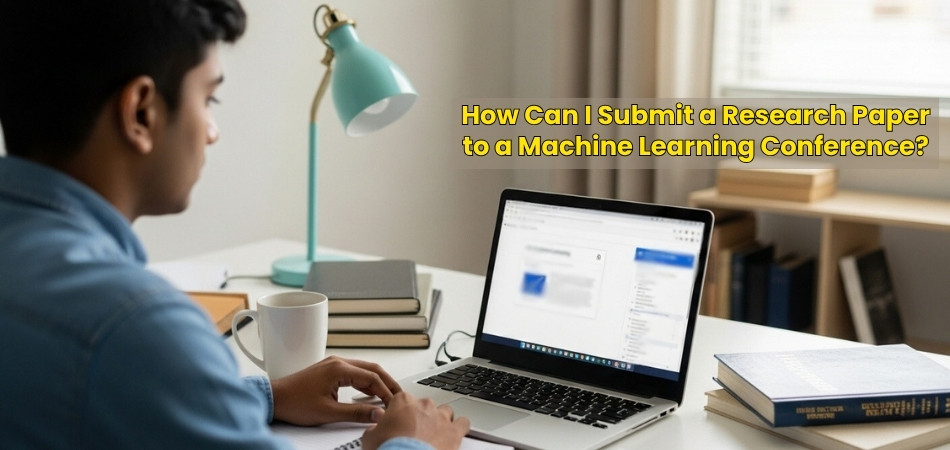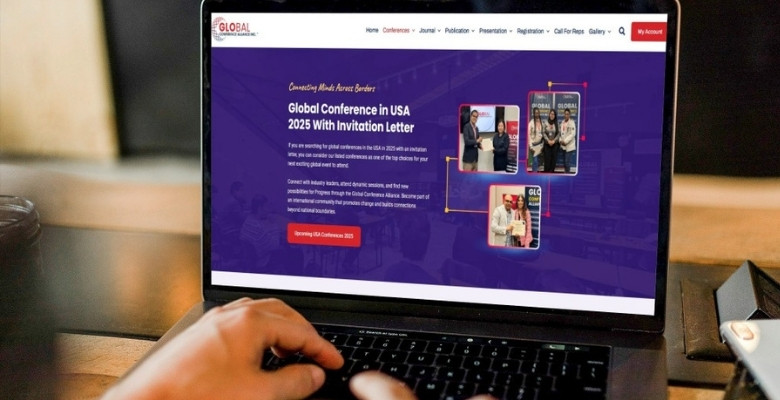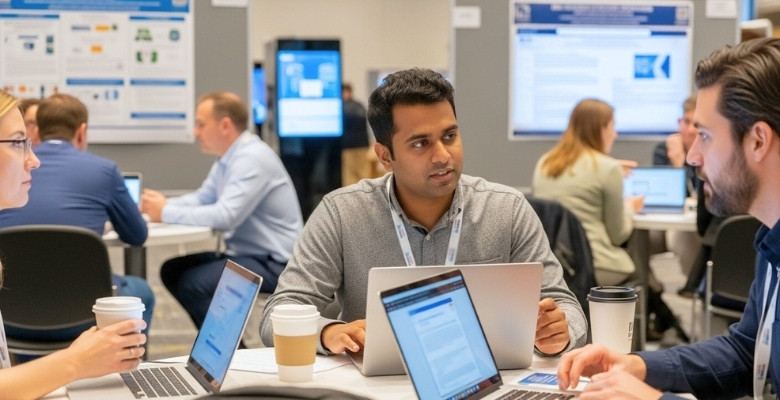Submitting a research paper to a machine learning conference is an exciting step for anyone working on something new and valuable. It can also feel confusing if it’s your first time and you’re unsure where to begin. That’s why you might have a question in mind, like How can I submit a research paper to a machine learning conference?
Submit your machine learning research paper by choosing the right conference, following format rules, writing clearly, and avoiding plagiarism. Create an account, upload files before the deadline, and revise if needed. After acceptance, prepare a short, clear presentation to share your work.
Are you curious about what happens after submission or how to make your paper stronger? If so, keep reading—this article covers every important detail from finding a co-author to giving your final presentation at the conference.
How Can I Submit a Research Paper to a Machine Learning Conference?
Getting your research paper into a machine learning conference can be exciting, but also confusing at first. You’ll need to know where to start and what steps to follow. Read the tips below to make your submission process easier.
Pick the Right Conference
You need to make sure the conference matches your paper’s topic. Some focus on ML methods, others on theory or real-world use. Check the deadline and theme before moving forward. For example, if you’re looking into some global events like conferences in USA, Canada, or another country, you’ll notice many of them have specific categories and rules that you need to follow. Picking the right place increases your chances of getting accepted, so don’t rush this step.
Follow All Rules
Each conference has its own set of rules for submissions. These include things like PDF format, page limits, font sizes, and citation styles. Also, check if you need to add things like a title page, keywords, or extra files. Read the instructions carefully before you start writing anything so you don’t end up redoing your work later.
Write Your Paper
Start writing your paper using a simple structure. First, explain the problem and why it matters. Then talk about what you did, the results you got, and what those results mean. Keep it clear and logical. Also, make sure your abstract quickly tells what your work is about and what makes it useful. This helps reviewers understand your paper fast.
Avoid Plagiarism
It’s really important to give credit when using someone else’s ideas. Always cite your sources the right way. Copying content without permission or not giving credit can get your paper rejected. If the conference asks about conflicts of interest, be honest and tell them. Following these steps keeps your paper safe from issues.
Hide Your Identity
If the conference uses double-blind review, you’ll need to keep your identity secret. That means removing names, places, and anything that can link the work to you. Don’t talk about your school, lab, or any unique project names. This helps the reviewers judge only the work and not who wrote it.
Make an Account
Go to the conference website and make an account there. After that, gather all the things they ask for: the paper, a short summary, extra material, and anything else listed. Be sure everything is ready before uploading. You might also need to write a short cover letter to go with your paper.
Submit on Time
After you finish everything, check if your files are the right size and format. If the conference needs everything in a single PDF or ZIP file, follow that. Then upload it using their system. Once it’s uploaded, you’ll usually get an email to confirm it’s been received.
Wait for Review
Once you submit your paper goes through a review process. First, someone checks if it meets basic rules. Then, experts in the field read it and give their opinions. You’ll get a result later—it might be accepted, rejected, or sent back for changes. Don’t worry if it’s not accepted right away.
Make Revisions
If they ask for changes, go through all their comments one by one. Fix any issues they pointed out and make sure your new version is better. You’ll usually get a deadline for this part, so keep track of it. Fixing the paper properly can help it get accepted the second time around.
Get Ready to Present
After your paper is accepted, you’ll need to present it. This could be with a poster or a slideshow. Make sure your talk is short, clear, and explains your idea well. Practice in advance so you’re confident and ready when the day comes.
Submitting a research paper to a machine learning conference takes careful planning, but it’s very doable if you follow each step. From choosing the right event to preparing your final presentation, everything plays a role. Don’t rush the process—focus on doing each part well. Once you understand how it works, it becomes much easier next time.
What is a Double-Blind Review and How Does It Work?
Double-blind reviews are peer reviews in which the author and reviewers remain anonymous. This means the reviewers don’t know who wrote the paper, and the authors don’t know who reviewed it. The goal is to keep things fair by removing personal bias during evaluation. If you’re curious about how this process actually works, here’s a simple breakdown to help you understand it better:
Paper Submission
The process begins when authors submit their research papers for review. These papers are sent in for consideration to be presented at the conference. Submissions must follow the provided formatting and guideline rules exactly. Only complete and properly formatted papers move forward.
Initial Screening
An early screening checks if the submitted paper fits the theme of the conference and follows all submission rules. This step ensures the paper meets basic quality standards before being reviewed. If it doesn’t meet the criteria, it may be rejected early. Only approved papers move on to the next stage.
Reviewer Assignment
Qualified reviewers are chosen based on their expertise in the subject area. They must not have any personal or professional conflicts with the paper or its authors. This ensures a fair and unbiased evaluation. Reviewers are assigned papers they can judge accurately.
Review Process
During this stage, both authors and reviewers stay anonymous to each other. Reviewers judge the paper on originality, quality, clarity, and how well it matches the conference topic. They provide detailed feedback and a recommendation. This feedback guides the final decision.
Decision Notification
Once the review is done, the conference team looks at all the comments and suggestions. A final decision is made to accept, reject, or ask for changes. Authors receive an email with the decision and the reviewers’ feedback. This helps authors know what’s needed next.
Revision and Final Decision
If revisions are requested, authors update their paper and send it back. Reviewers or editors check the new version to see if the changes fix the issues. A final decision is then made. Only fully approved papers are accepted.
Presentation at the Conference
Accepted papers are shared at the conference through different formats. These might include live talks, poster displays, or other formats set by the organizers. The type of presentation depends on the paper and the event schedule. This is the final step of the process.
Understanding each step of the double-blind review process helps make the submission journey clearer and less stressful. It’s all about fairness, quality, and giving every paper a proper chance. Follow the process closely, and you’ll be well prepared.
What Reviewers Look for in a Machine Learning Paper?
Machine learning papers aren’t always accepted right away. Reviewers read it first and decide if it’s good enough. They follow certain things to judge a paper fairly. Here’s what they usually focus on:
- Novelty: The paper should offer something new, not just repeat old work. Reviewers want to see ideas that haven’t already been done.
- Clarity: Reviewers expect the paper to be easy to understand. Clear writing helps them know exactly what the paper is about.
- Empirical Results: A good paper includes proper testing and results. Reviewers check if the results actually support what the paper claims.
- Reproducibility: Reviewers like it when someone can repeat the work and get similar results. It means the method was explained well enough.
- Relevance: The topic must fit the theme of the conference. A strong paper matches the kind of work the event is looking for.
- Technical Quality: Reviewers check if the methods used are correct and well-supported. Mistakes or weak logic can lead to rejection.
- Contribution: A solid paper shows why the work matters. It must clearly explain how it adds value to the field of machine learning.
Reviewers have a clear list of things they look for when reading a machine learning paper. They care about how new, useful, and well-explained the work is. If your paper covers all the key points, it stands a better chance. Keep these tips in mind before you submit anything.
How to Choose the Right Machine Learning Conference for Your Paper?
Finding the right place to submit your machine learning paper can be tricky, especially with so many conferences out there. Some focus more on theory, others on real-world applications. Knowing the differences can really help. Keep reading to find out how to choose the one that suits your work best.
Match the Conference Topic
Many major conferences in the USA, for example, focus on ethical AI, autonomous systems, or applied machine learning. So if you’re about to attend one of these events, make sure your paper fits within the topics covered at machine learning conferences in the USA, as alignment with conference themes is a key factor in acceptance.
Know the Audience
It’s helpful to think about who will be reading or watching your work. Some conferences bring together researchers who love technical theory, while others invite people using machine learning in business or science. If your paper is heavy on math or models, go for theory-focused events. If it shows how ML works in real life, pick one that attracts applied researchers or professionals. Choosing the right audience improves your paper’s chances.
Check Acceptance Rates
Each conference has its own acceptance rate, which means how many papers they allow in. Popular events like NeurIPS or ICML are very selective, so getting accepted there is harder. Smaller or newer conferences may offer better chances if you’re submitting a first-time paper. Don’t always aim for the biggest name—aim for the one where your work fits and can be appreciated. A good match is more important than a fancy title.
Think About Your Goals
Different people have different reasons for submitting papers. Some want feedback from experts, some want more visibility, and others just want to get accepted somewhere. If your goal is to meet others in your field, choose a well-attended event. If you’re after expert advice, go where reviewers offer detailed feedback. Always choose based on what you want most from the experience.
Review Past Papers
Looking at papers accepted in past years can tell you a lot. You’ll see what kind of work the conference likes and what style they prefer. If the papers sound like yours in topic or tone, that’s a good sign. This quick check can save you from wasting time on a mismatch. It also gives ideas for how to improve your own submission.
Choosing the right conference is just as important as writing a good paper. It helps your work get noticed by the right people. Don’t just follow big names—look for the best fit. A well-matched conference gives your paper a better shot at being accepted.
How to Find a Collaborator for Your Machine Learning Conference Research Paper?
Finding someone to work with on your machine learning paper can really improve your ideas and results. A good partner can fill in the gaps where you need help. It’s not just about skill—it’s also about shared effort. If you’re wondering how to actually find the right person, keep reading for some helpful ways to do it.
Know What You Need
Before searching for someone to work with, it’s smart to figure out what kind of help you really need. Maybe you’re good at writing but need help with coding or data work. Or maybe you need someone who knows a certain topic, like healthcare or finance. Once you know your weak spots, it’s easier to find someone who fits and can balance the project with you.
Start With Your Circle
The easiest place to begin is with people you already know. This could be someone in your class, a professor, or a coworker from a past project. People from your school or workplace are more likely to understand how you work. You might also find a good match at lab meetings, meetups, or through a supervisor who knows others doing similar work.
Join Events and Conferences
Attending machine learning conferences can help you meet people who care about the same things you do. You can talk to others during poster sessions, workshops, or breaks. It’s a great way to find someone who might want to team up. These events are also good for spotting speakers or researchers who are working on something close to your own topic.
Use Online Communities
If you can’t find someone locally, the internet has plenty of options. Websites like ResearchGate or LinkedIn let you see what kind of work people are doing. There are also Discord groups, Slack channels, and sites like ML Collective that are built for meeting other researchers. These platforms let you chat, share ideas, and even find someone to write with.
Reach Out Thoughtfully
You shouldn’t be afraid to reach out to someone whose work you like. Just make sure it’s short and polite. Mention what you like about their work and how your ideas connect. Be honest about what you can offer and ask if they’d like to talk more. A small step, like sharing your draft, is a great way to start.
Finding the right co-author isn’t about rushing. It takes time, good communication, and clear expectations. But when you team up with the right person, your research becomes stronger—and so does your chance at a great paper.
Common Mistakes to Avoid When Submitting Your ML Conference Paper?
Submitting a paper to a machine learning conference is exciting, but there are some things that can go wrong if you’re not careful. Even small mistakes can hurt your chances. That’s why it’s important to know what to avoid early on.
- Don’t wait until the last day to submit, because websites often crash or slow down when everyone is rushing to upload.
- Always follow the paper formatting rules exactly—wrong fonts, page lengths, or margins can lead to instant rejection.
- Avoid writing in a confusing or messy way; if your paper is hard to read, reviewers may not understand your main idea.
- Make sure you include enough experiments to support your claims—without strong results, your work may not seem believable.
- Don’t forget to explain what makes your work new or different; reviewers want to see what’s fresh and original.
- Leaving out references or copying from other work without credit is a big mistake and can get your paper rejected immediately.
- Submitting without proofreading is risky; simple grammar or spelling errors can make your paper look rushed and unprofessional.
Being careful with small things can make a big difference when you’re submitting your paper. Reviewers appreciate clear writing, clean formatting, and complete ideas. Avoiding common mistakes gives your work a better chance. Aim to impress, not just submit.
How to Handle a Rejected Paper and Improve It for Resubmission at the Conference?
Getting a paper rejected can feel disappointing, especially after putting in so much effort. But it’s something that happens to almost everyone in research at some point. What matters is what you do next. Here are some simple ways to bounce back stronger.
Take a Short Break
Once you get the rejection email, it’s okay to step back for a moment. Give yourself a bit of time to cool off and clear your mind. Don’t rush into editing while still feeling upset. A short break helps you return with a fresh point of view and more focus to make the paper better.
Read Feedback Carefully
Go through the reviewer comments slowly and try to understand what they are saying. Even if it feels harsh at first, there’s usually helpful advice in there. Make a list of the main points they mentioned. This will guide you in knowing what to change or improve in your next version of the paper.
Fix and Improve
Start working on your paper again with the comments in mind. If a section was unclear, rewrite it more clearly. If your results were weak, try to run more tests or add better data. Fix anything else that didn’t work well. Use the feedback to turn your paper into something stronger and easier to understand.
Choose a New Venue
Just because one conference said no doesn’t mean others will. Look for a different conference that fits your topic. Smaller or more focused events might be a better match. Make sure to check the rules and deadlines for the new place and adjust your paper if needed before submitting again.
Stay Positive and Motivated
A rejection doesn’t mean your work is bad—it just means it needs more work. Most researchers get rejected at some point. Use it as a push to do better next time. Keep learning, keep trying, and don’t let one “no” stop you from chasing a “yes.”
Rejection can actually help your paper improve if you handle it the right way. Take feedback seriously, fix what’s needed, and try again. With more effort and patience, your paper could soon get accepted. Keep going—you’re closer than you think.
Presenting Your Paper at the ML Conference: Tips and Best Practices
Presenting your paper at a machine learning conference is an exciting chance to share your work with others. It can also be a bit nerve-wracking if you’re not prepared. But with the right steps, you can do it well. Here are some tips to help you feel ready and confident.
- Know Your Content: You should fully understand your paper, not just memorize slides, so you can explain it clearly and confidently.
- Practice Often: Going through your presentation multiple times helps you get smoother and feel more relaxed while talking.
- Time Yourself: Make sure your talk fits within the time limit. Running over time can hurt your chances of making a good impression.
- Start Strong: Begin with a simple intro that grabs attention and clearly says what your paper is about and why it matters.
- Use Simple Slides: Keep slides clean and easy to read—avoid putting too much text or small fonts that are hard to see.
- Explain Terms: If your topic has technical words, explain them simply so even those outside your field can follow along.
- Highlight Key Points: Focus on the most important results and ideas, not every detail. Pick what helps others quickly understand your work.
- Prepare for Questions: Think ahead about what people might ask. Having answers ready helps you look more confident and well-prepared.
- Repeat Main Ideas: Mention your main idea more than once to help your audience remember it, especially if it’s a complicated topic.
- Stay Calm: It’s normal to feel nervous. Take a deep breath, smile, and speak slowly—you’ll come across much more clearly.
- Use a Laser Pointer: If you’re showing graphs or charts, point directly to what you’re talking about so people don’t get lost.
- Practice with Others: Try presenting in front of friends or family. They can give you useful tips and help you spot what needs fixing.
- Know the Format: Check if it’s an oral talk or a poster session. Each format needs a slightly different way of presenting your work.
- Arrive Early: Getting to your session ahead of time helps you relax and gives you time to set up without stress.
- Be Friendly: Smile, say hello, and thank people for listening or asking questions. Being polite makes a great final impression.
Delivering a well-prepared presentation is just one part of the experience. To truly get the most out of a machine learning conference in the USA, engage in discussions, attend relevant sessions, and connect with peers working on similar research.
FAQs About How Can I Submit a Research Paper to a Machine Learning Conference?
Here are some frequently asked questions that many people have when planning to submit a paper to a machine learning conference. These cover small but important details that are easy to miss if you’re new to the process. Take a look—your doubts might be answered here.
How Long Should My Paper Be?
Each conference has its own rules, but most papers are between 6 and 10 pages long, not counting references or extra material. Papers that are too short may appear weak. If it’s too long, they might not accept it at all. Always check the paper length rule in the conference’s submission guidelines.
Can I Submit My Paper to More Than One Conference?
No, you usually can’t submit the same paper to more than one conference at the same time. Most conferences want original work that hasn’t been published or submitted elsewhere. If you try to submit it to two places at once, your paper can be removed. Always pick one place and wait for their decision.
Do I Need to Pay to Submit?
Some conferences charge a small fee for submission or registration. The submission itself might be free, but if your paper is accepted, you’ll likely need to pay a registration fee. This fee lets you attend the event and present your paper. Make sure to check the cost before submitting.
What File Format Should I Use?
Most conferences ask you to upload your paper in PDF format. You also need to follow their style file or template when writing the paper. Some may ask for extra files like code or data in ZIP format. Always double-check what formats are allowed before uploading.
Can I Use My Own Diagrams?
Yes, you can and should use your own diagrams or charts to explain your work. Just make sure they are clear and labeled well. Avoid copying diagrams from other papers unless you have permission and give credit. Good visuals can help reviewers understand your idea better.
What If I Miss the Deadline?
If you miss the submission deadline, there’s usually no second chance. Most conferences are strict about deadlines and don’t allow late entries. It’s a good idea to finish your paper early and upload it a few days before the last date. That way, you won’t run into last-minute problems.
How Do I Choose Keywords?
Keywords are short words or phrases that describe your paper’s topic. You pick them when you submit the paper, and they help match your work to the right reviewers. Choose words that clearly explain the main parts of your research. Don’t just pick random popular terms.
Do I Have to Share My Code?
Some conferences ask you to include your code or at least make it available after acceptance. Sharing your code helps others check your work and try it themselves. If your code isn’t ready to share, say so in the paper, but be honest. Always read the rules to see what’s required.
Can I Still Submit If English Is Not My First Language?
Yes, you can. Your paper doesn’t have to be perfect, but it should be clear and understandable. You can ask someone to proofread your writing before submission. Many strong papers come from writers who are not native English speakers.
What Happens After I Submit My Paper?
After submission, your paper is checked to make sure it follows all the rules. Then it’s sent to reviewers who read it and give their feedback. Based on their comments, the conference team will decide if it’s accepted, rejected, or needs changes. You’ll get an email with their decision later.
Last Words
Submitting your work to a machine learning conference might feel overwhelming at first, but it’s fully possible when you take it step by step. From choosing the right event to writing clearly and following the rules, every part matters. Now you’ve got a clear idea of what to do, and you no longer have to wonder how can I submit a research paper to a machine learning conference.
To wrap it up, stay organized, proofread your work, and give yourself enough time before deadlines. Don’t be afraid of feedback—it only makes your work better. Believe in your research, keep learning, and give your best effort. Good luck with your submission—we hope to see your name on a future conference paper!









